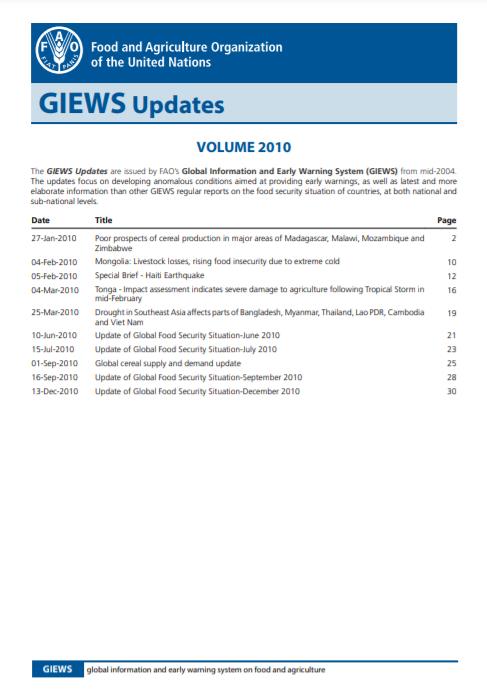
GIEWS Updates - Volume 2010
27/01/2010
The GIEWS Updates are issued by FAO’s Global Information and Early Warning System (GIEWS) from mid-2004. The updates focus on developing anomalous conditions aimed at providing early warnings, as well as latest and more elaborate information than other GIEWS regular reports on the food security situation of countries, at both national and sub-national levels.
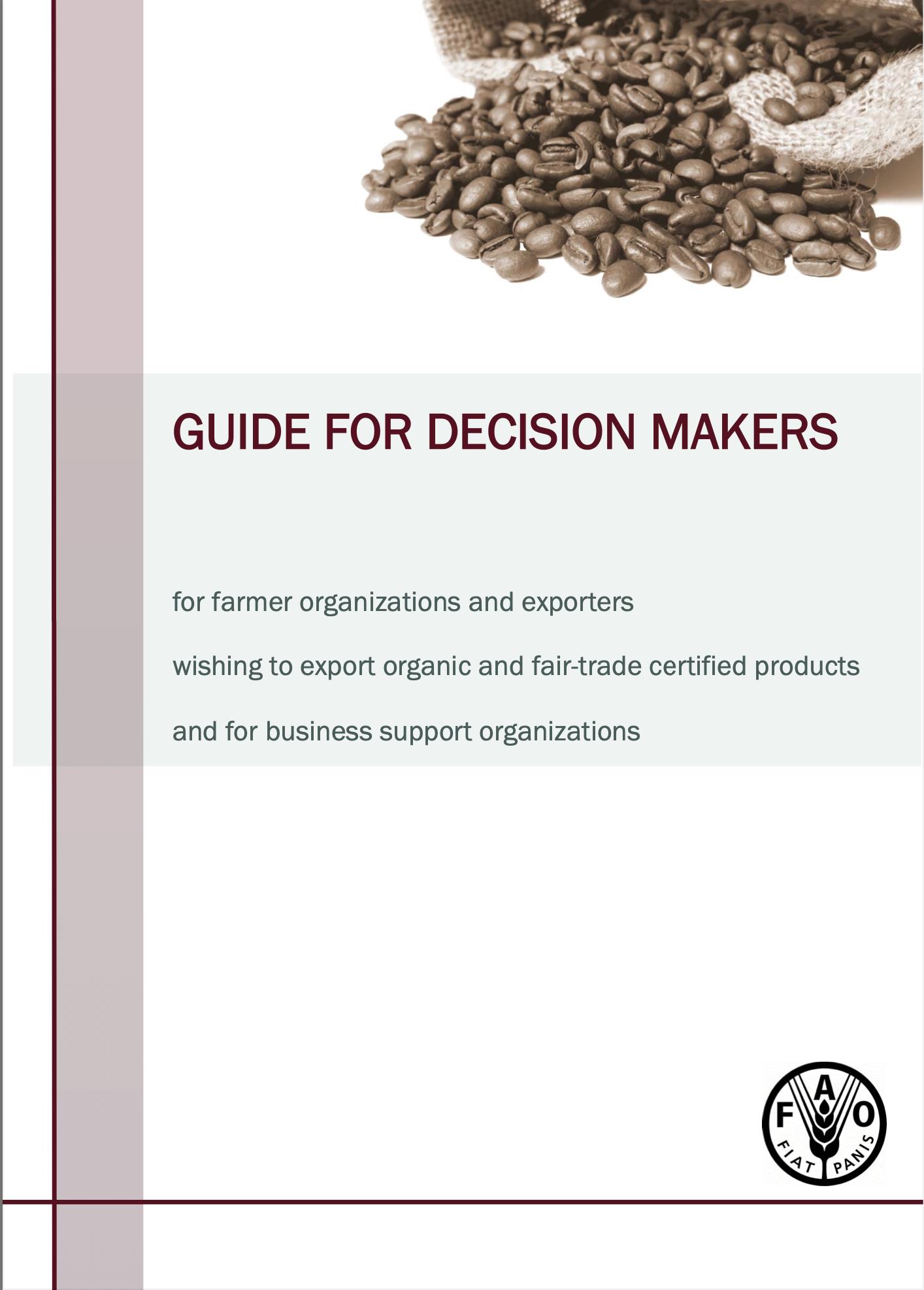
Guide For Decision Makers
01/01/2010
This guide draws on the lessons learned in the framework of the project “Increasing incomes and food security of small farmers in West and Central Africa through exports of organic and fair-trade tropical products, implemented by FAO in Burkina Faso, Cameroon, Ghana, Senegal and Sierra Leone from September 2005 to September 2009, with funds provided by the German Government. For more information on this project, consult its website at . This guide was developed for farmer organizations and companies wishing to export organic and fair-trade certified products, as well as for organizations providing them with support services.
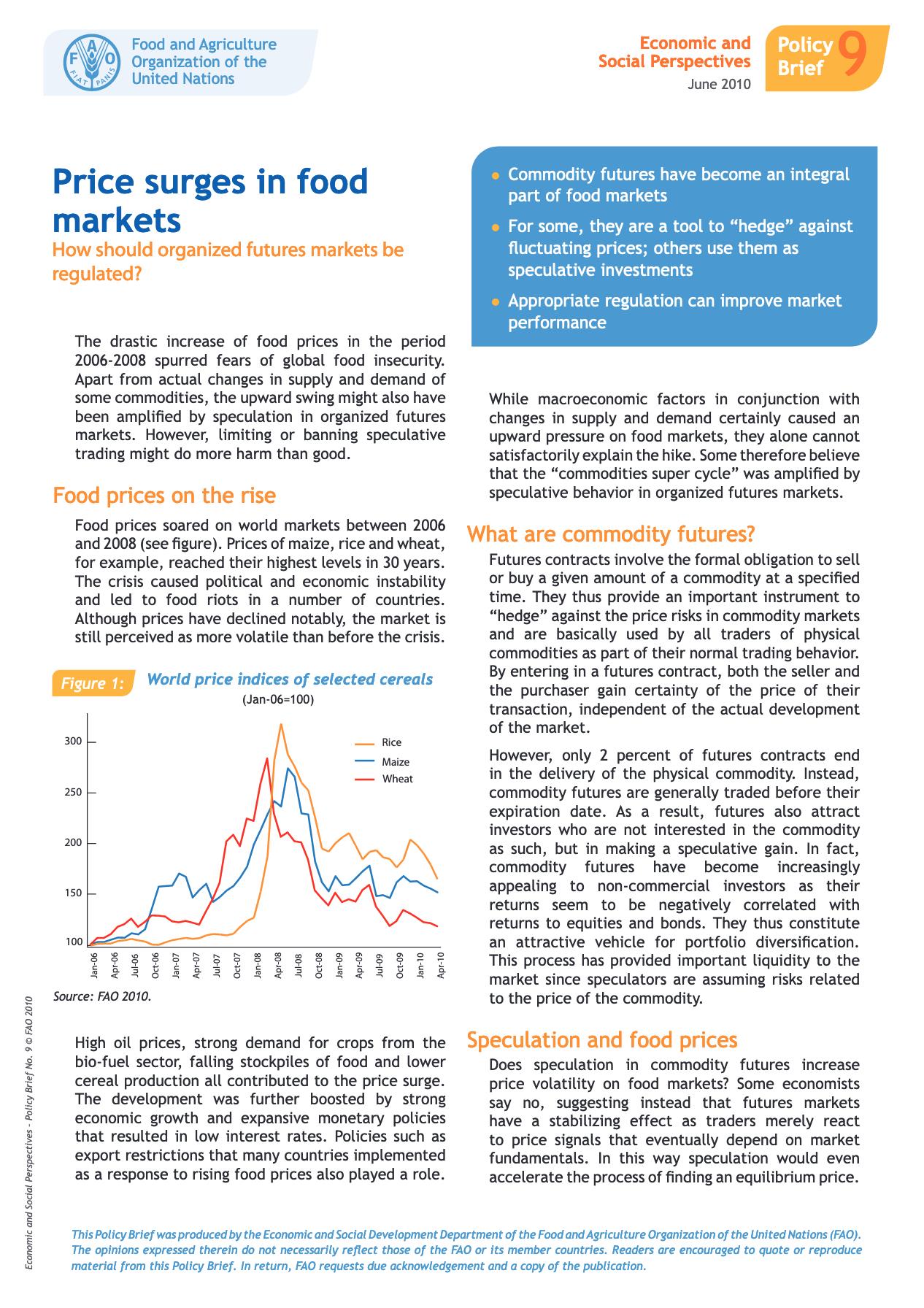
Price surges in food markets
01/01/2010
The drastic increase of food prices in the period 2006-2008 spurred fears of global food insecurity. Apart from actual changes in supply and demand of some commodities, the upward swing might also have been amplified by speculation in organized futures markets. However, limiting or banning speculative trading might do more harm than good.
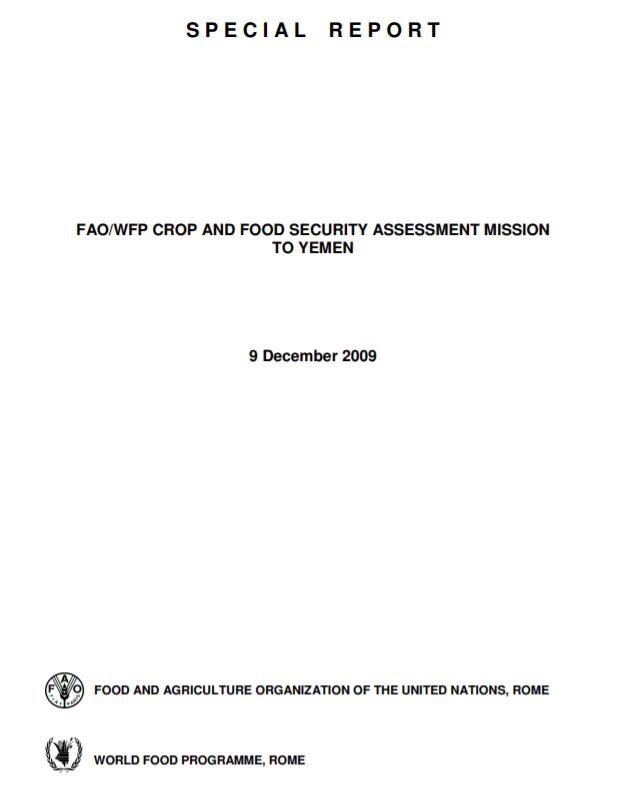
Special Report - FAO/WFP Crop and Food Security Assessment Mission to Yemen
09/12/2009
An FAO/WFP Crop and Food Security Assessment Mission visited Yemen from 3 to 17 October 2009 to estimate the 2009 main season cereal production and assess the overall food security situation for the 2010 marketing year (January/December). The Mission included two experts from the FAO Emergency Operations and Rehabilitation Division of the Technical Cooperation Department (TCES) that drafted emergency agricultural rehabilitation projects as inputs in the 2010 Yemen Humanitarian Response Plan.
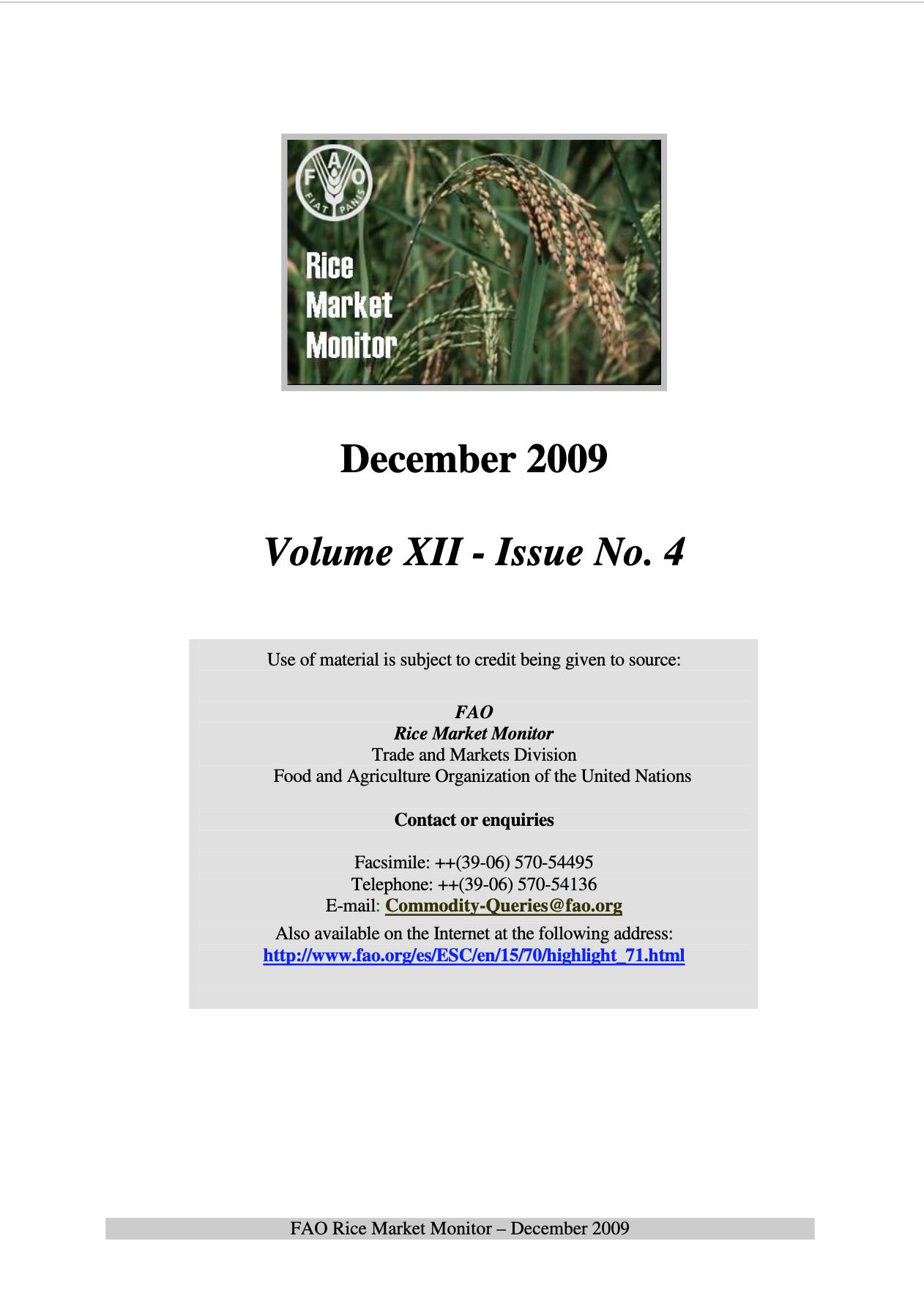
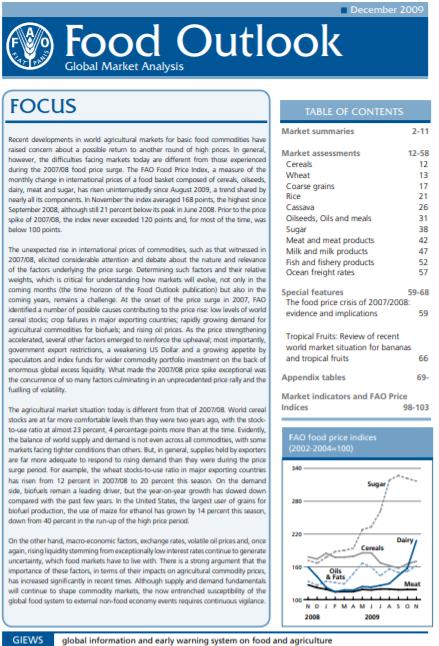
Food Outlook - December 2009
02/12/2009
Recent developments in world agricultural markets for basic food commodities have raised concern about a possible return to another round of high prices. In general, however, the difficulties facing markets today are different from those experienced during the 2007/08 food price surge. The FAO Food Price Index, a measure of the monthly change in international prices of a food basket composed of cereals, oilseeds, dairy, meat and sugar, has risen uninterruptedly since August 2009, a trend shared by nearly all its components. In November the index averaged 168 points, the highest since September 2008, although still 21 percent below its peak in June 2008. Prior to the price spike of 2007/08, the index never exceeded 120 points and, for most of the time, was below 100 points.
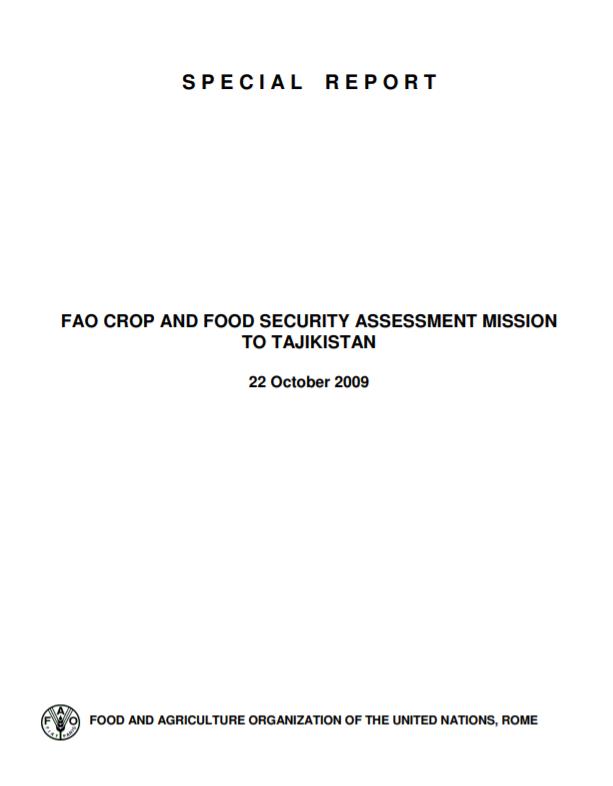
Special Report - FAO Crop and Food Security Assessment Mission to Tajikistan
22/10/2009
An FAO Crop and Food Security Assessment Mission, with the collaboration of the Ministry of Agriculture (MoA), was conducted in Tajikistan from 7-24 July 2009, following a request from the Government to assess the food situation in the country. The Mission was to estimate the 2009 main season (winter and spring) cereal production and forecast the secondary (summer) season cereal crops; assess the overall food supply situation; and estimate cereal import requirements for the 2009/10 marketing year (July/June).
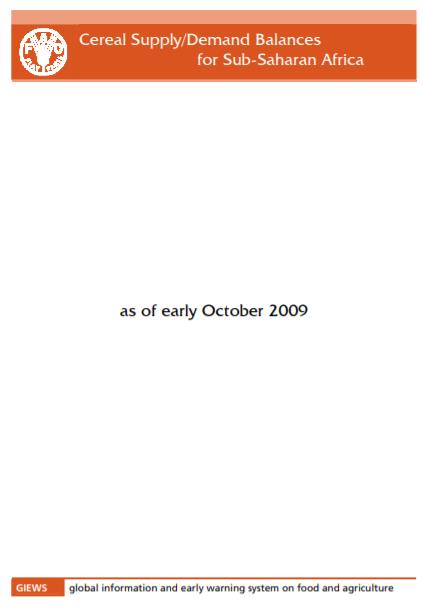
Cereal supply and demand balances for sub-Saharan African countries - No.4, October 2009
08/10/2009
The FAO/GIEWS Country Cereal Balance System (CCBS) is a database of annual supply and utilization balances for main cereals, covering all countries of the world. It has been maintained by FAO/GIEWS since 1980 and is updated on a continual basis. This statistical report, which is a subset of CCBS data, presents the current-year cereal supply and demand balances for all sub-Saharan African countries, highlighting cereal import and food aid requirements of each country. This report is complement ary to the FAO/GIEWS report Crop Prospects and Food Situation and is published four times a year, with the same schedule.
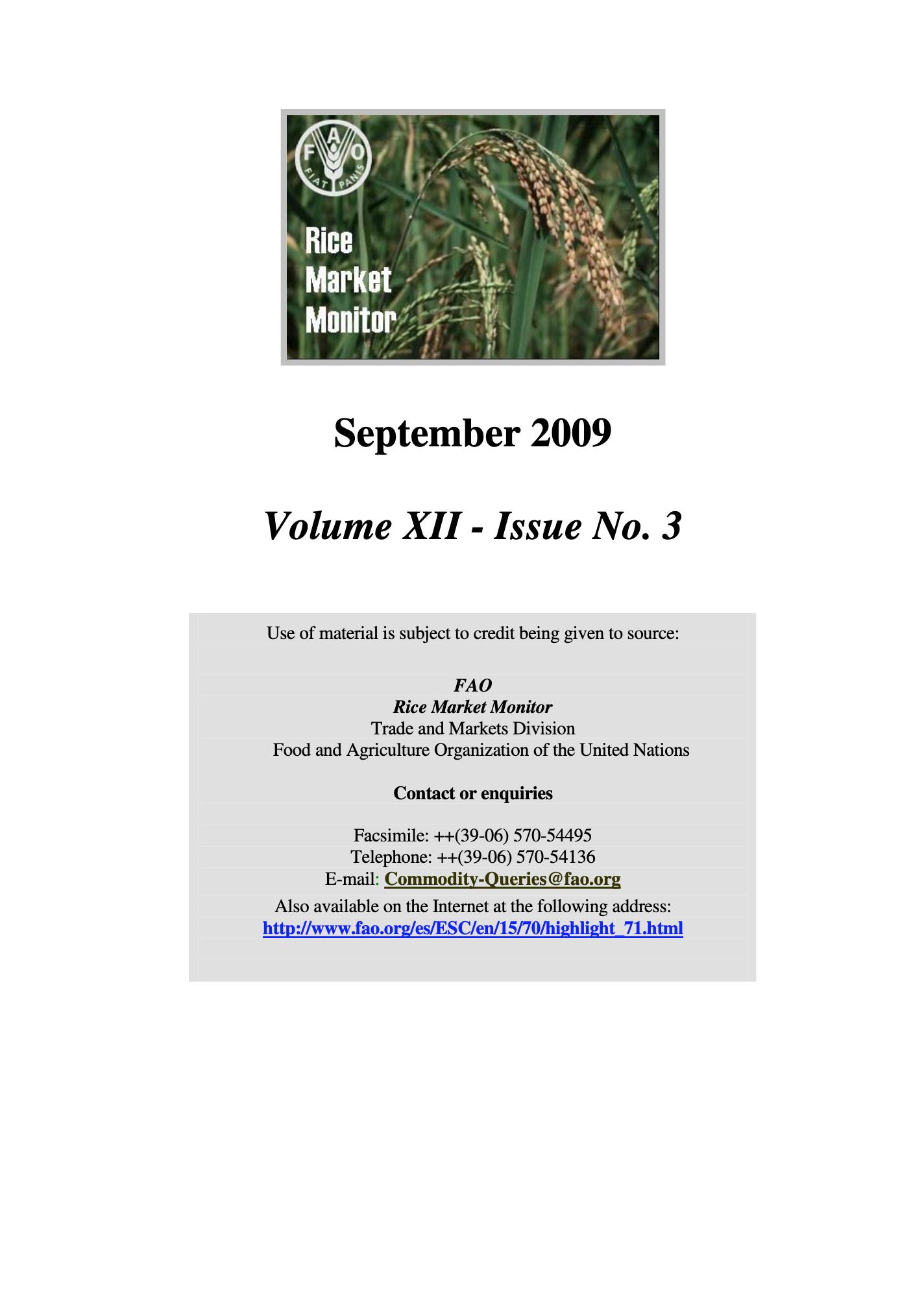
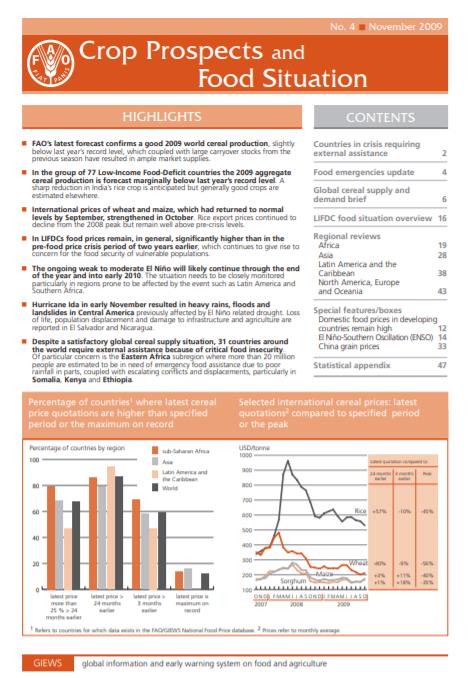
Crop Prospects and Food Situation #4, November 2009
10/09/2009
FAO’s latest forecast confirms a good 2009 world cereal production, slightly below last year’s record level, which coupled with large carryover stocks from the previous season have resulted in ample market supplies. In the group of 77 Low-Income Food-Deficit countries the 2009 aggregate cereal production is forecast marginally below last year’s record level. A sharp reduction in India’s rice crop is anticipated but generally good crops are estimated elsewhere. International prices of wheat and maize, which had returned to normal levels by September, strengthened in October. Rice export prices continued to decline from the 2008 peak but remain well above pre-crisis levels. In LIFDCs food prices remain, in general, significantly higher than in the pre-food price crisis period of two years earlier, which continues to give rise to concern for the food security of vulnerable populations.
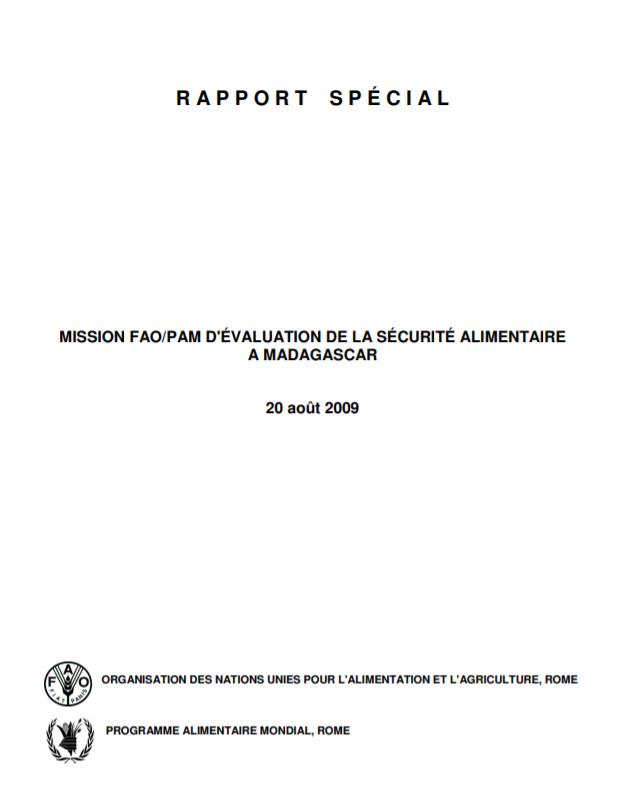
Rapport Spécial - Mission FAO/PAM D'Évaluation de la Sécurité Alimentaire a Madagascar
20/08/2009
C’est dans ce contexte qu’une évaluation conjointe de la situation alimentaire du pays a été organisée par le PAM et la FAO. L’évaluation qui a mis l’accent sur la situation alimentaire et les perspectives au sud de l’Ile s’est déroulée en deux phases importantes. Premièrement, une équipe conjointe FAO/PAM a visité le pays du 22 mai au 7 juin 2009. Cette mission a eu des réunions dans la capitale Antanarivo, a formé les enquêteurs pour l’enquête de ménages qui a couvert en plus de la zone sud, certains districts de l’est et des grandes zones de production rizicole au nord et au centre (deuxième phase) et visité la partie sud du pays qui fait face à des problèmes sérieux d’insécurité alimentaire suite à plusieurs années de sécheresse. A Antananarivo, les réunions et séances d’information avec divers organismes gouvernementaux et internationaux ainsi qu’avec des organisations non gouvernementales (ONG) locales et internationales ont permis d’évaluer la situation générale des approvisionnements alimentaires dans le pays et de recueillir des rapports et des statistiques utiles. La mission s’est ensuite rendue dans les régions d’Ambovombe, et Amboasary au Sud du pays où, sur le terrain, les discussions ont eu lieu avec le personnel des organismes nationaux et régionaux, les techniciens de terrain, les agriculteurs, les négociants ainsi que les chefs des communautés. La mission s’est rendue dans les champs afin d’évaluer les dégâts sur les cultures et sur les marchés pour vérifier la disponibilité et les prix des produits agricoles. La mission a travaillé en étroite collaboration avec le Système d’Alerte Précoce (SAP).
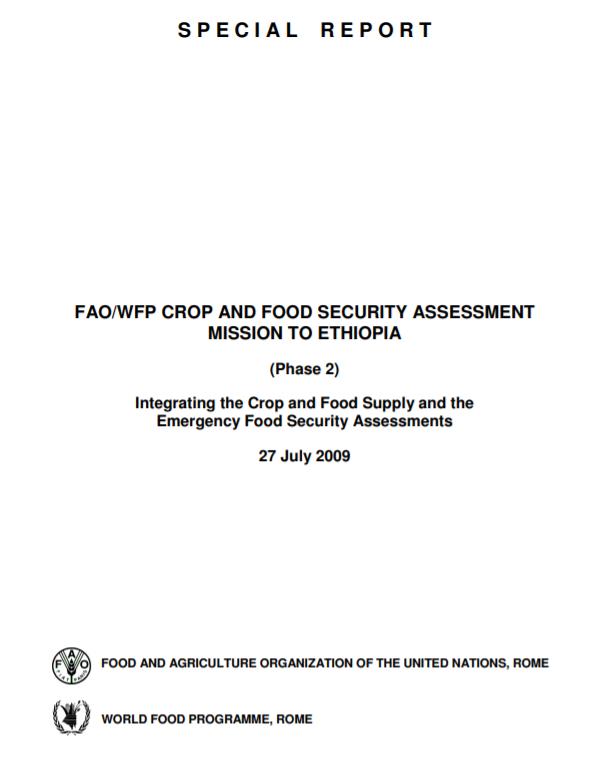
Special Report - FAO/WFP Crop and Food Security Assessment Mission to Ethiopia (Phase 2) - 27 July 2009
27/07/2009
The FAO together with Ministry of Agriculture and Rural Development (MoARD), the Bureaux of Agriculture and Rural Development (BoARD) and the Central Statistical Agency (CSA), participated in the 2008/09 FAO/WFP Crop and Food Security Assessment Mission (CFSAM) from 16 November to 12 December 2008. The assessment concentrated on aggregate crop production and macroeconomic issues and also analyzed the resultant cereal supply/demand. The Meher needs assessment led by Disaster Management and Food Security Sector (DMFSS) together with other partners, including WFP, was conducted from 17 November to 12 December 2008 and concentrated on the assessment of emergency food and non-food needs, at the micro/household level. Hence, this report represents a synthesis of the main results and recommendations of the two assessments carried out towards the end of last year with some updates due to the availability of new information.
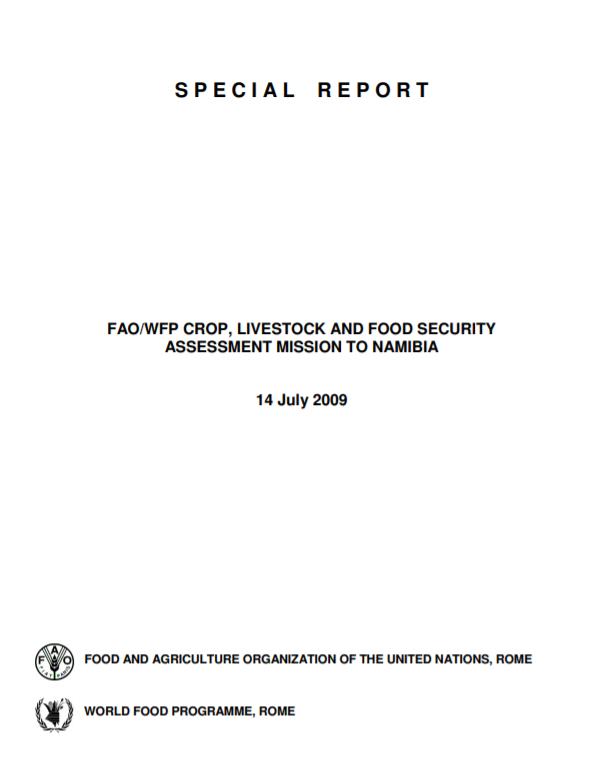
Special Report - FAO/WFP Crop, Livestock and Food Security Assessment Mission to Namibia
14/07/2009
The Mission was in the country from 24 May to 17 June 2009. It spent a few days in Windhoek, the capital city, holding discussions with and receiving briefings from various Government departments, particularly divisions of the Ministry of Agriculture, Water and Forestry (MAWF), as well as parastatal bodies such as Namibia Agronomic Board. The Mission then split into three groups and spent 10 days in the affected northern regions accompanied by national experts from the National Early Warning Unit (NEWU), whose assistance and contributions to the work of the Mission are hereby gratefully acknowledged. The first team covered the regions of Kunene North, Omusati and Oshana, the second covered Ohangwena and Oshikoto (and one region in the centre– Otjozondjupa – at the request of MAWF even though the region had not been affected by the flood emergency), while the third assessed Kavango and Caprivi.
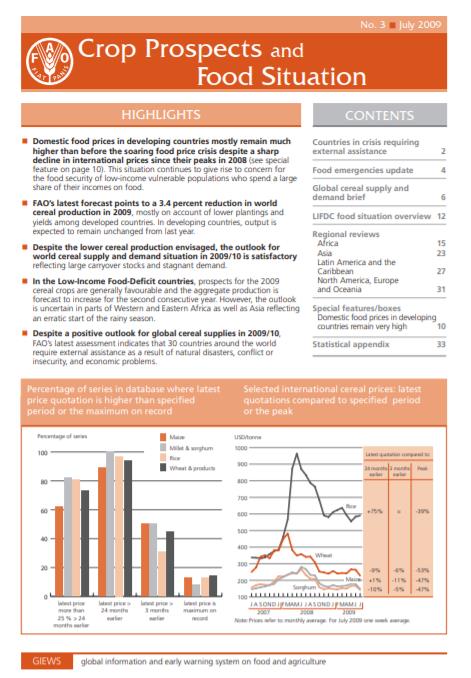
Crop Prospects and Food Situation #3, July 2009
09/07/2009
Domestic food prices in developing countries mostly remain much higher than before the soaring food price crisis despite a sharp decline in international prices since their peaks in 2008. This situation continues to give rise to concern for the food security of low-income vulnerable populations who spend a large share of their incomes on food. FAO’s latest forecast points to a 3.4 percent reduction in world cereal production in 2009, mostly on account of lower plantings and yields among developed countries. In developing countries, output is expected to remain unchanged from last year.
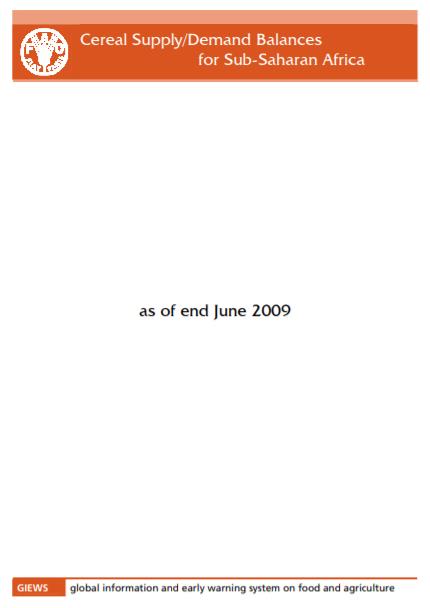
Cereal supply and demand balances for sub-Saharan African countries - No.3, June 2009
30/06/2009
The FAO/GIEWS Country Cereal Balance System (CCBS) is a database of annual supply and utilization balances for main cereals, covering all countries of the world. It has been maintained by FAO/GIEWS since 1980 and is updated on a continual basis. This statistical report, which is a subset of CCBS data, presents the current-year cereal supply and demand balances for all sub-Saharan African countries, highlighting cereal import and food aid requirements of each country. This report is complement ary to the FAO/GIEWS report Crop Prospects and Food Situation and is published four times a year, with the same schedule.
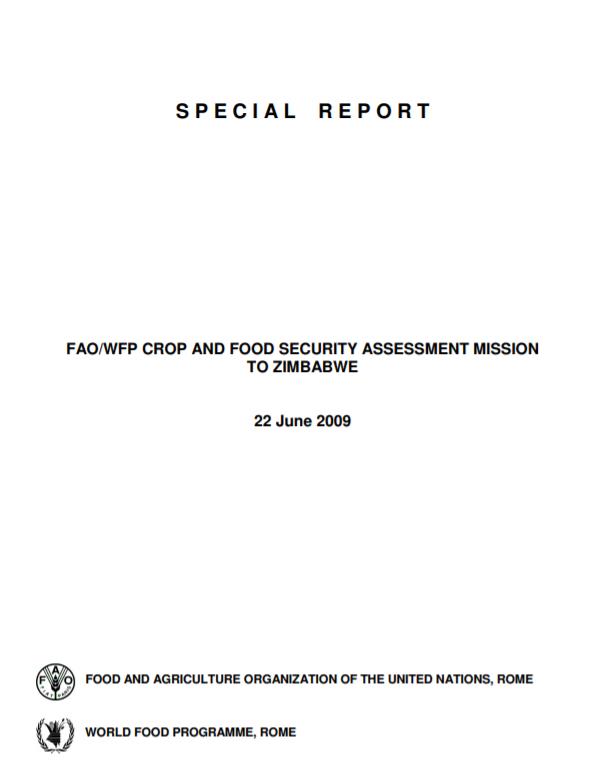
Special Report - FAO/WFP Crop and Food Security Assessment Mission to Zimbabwe - 22 June 2009
22/06/2009
Zimbabwe faced uncontrollable and ever-escalating hyperinflation, a sustained period of negative economic growth, massive devaluation of the currency, reduced productive capacity with significant de-industrialization and resulting widespread poverty and food shortages during much of the last year. Against this backdrop a joint FAO/WFP Crop and Food Security Assessment Mission (CFSAM) was requested by the Government. The Mission visited the country from 24 April to 15 May 2009 to carry out an independent assessment of the 2009 production of the main cereals, assess the overall food security situation and determine the food import requirement, including food assistance needs, for the current marketing year 2009/10 (April/March). The primary purpose of a CFSAM is to provide an accurate picture of the extent and severity of crisis-induced food insecurity, existing or expected, in the country (and in specific areas) so that timely and appropriate actions can be taken by the government and the international community to minimize the impact of the crisis on affected populations.
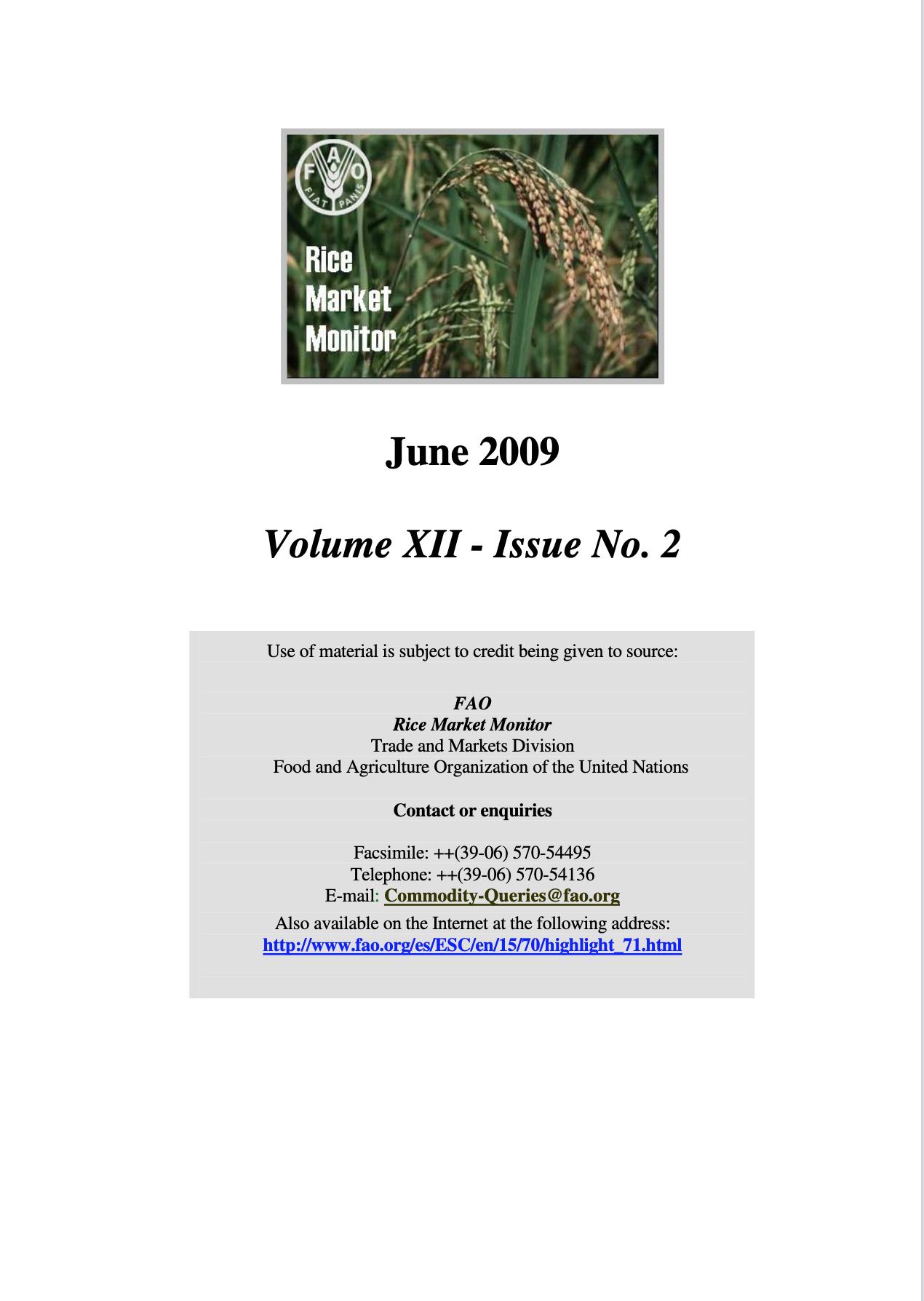
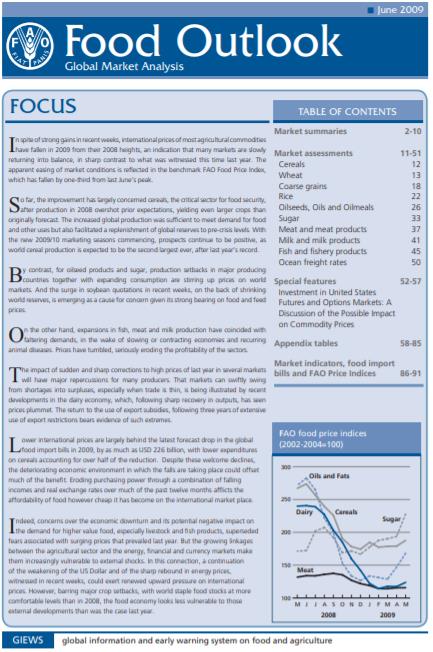
Food Outlook - June 2009
03/06/2009
In spite of strong gains in recent weeks, international prices of most agricultural commodities have fallen in 2009 from their 2008 heights, an indication that many markets are slowly returning into balance, in sharp contrast to what was witnessed this time last year. The apparent easing of market conditions is reflected in the benchmark FAO Food Price Index, which has fallen by one-third from last June’s peak.
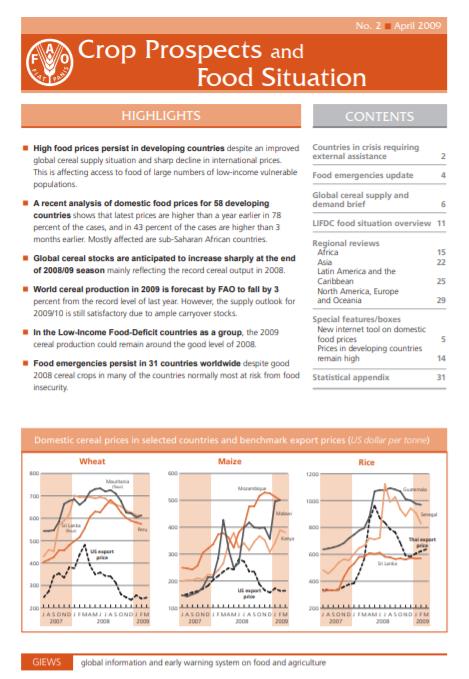
Crop Prospects and Food Situation #2, April 2009
09/04/2009
High food prices persist in developing countries despite an improved global cereal supply situation and sharp decline in international prices. This is affecting access to food of large numbers of low-income vulnerable populations. A recent analysis of domestic food prices for 58 developing countries shows that latest prices are higher than a year earlier in 78 percent of the cases, and in 43 percent of the cases are higher than 3 months earlier. Mostly affected are sub-Saharan African countries. Global cereal stocks are anticipated to increase sharply at the end of 2008/09 season mainly reflecting the record cereal output in 2008. World cereal production in 2009 is forecast by FAO to fall by 3 percent from the record level of last year. However, the supply outlook for 2009/10 is still satisfactory due to ample carryover stocks. In the Low-Income Food-Deficit countries as a group, the 2009 cereal production could remain around the good level of 2008. Food emergencies persist in 31 countries worldwide despite good 2008 cereal crops in many of the countries normally most at risk from food insecurity.
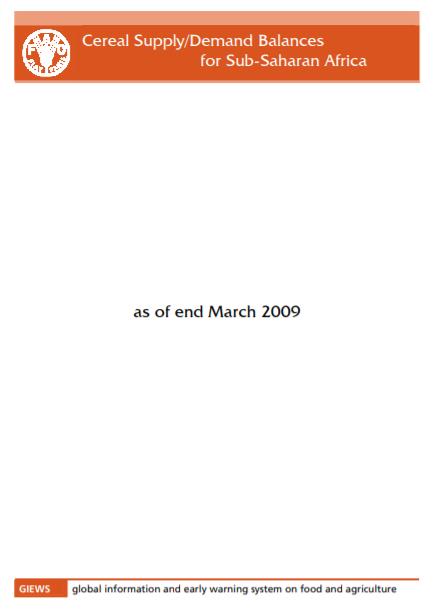
Cereal supply and demand balances for sub-Saharan African countries - No.2, March 2009
31/03/2009
The FAO/GIEWS Country Cereal Balance System (CCBS) is a database of annual supply and utilization balances for main cereals, covering all countries of the world. It has been maintained by FAO/GIEWS since 1980 and is updated on a continual basis. This statistical report, which is a subset of CCBS data, presents the current-year cereal supply and demand balances for all sub-Saharan African countries, highlighting cereal import and food aid requirements of each country. This report is complement ary to the FAO/GIEWS report Crop Prospects and Food Situation and is published four times a year, with the same schedule.
